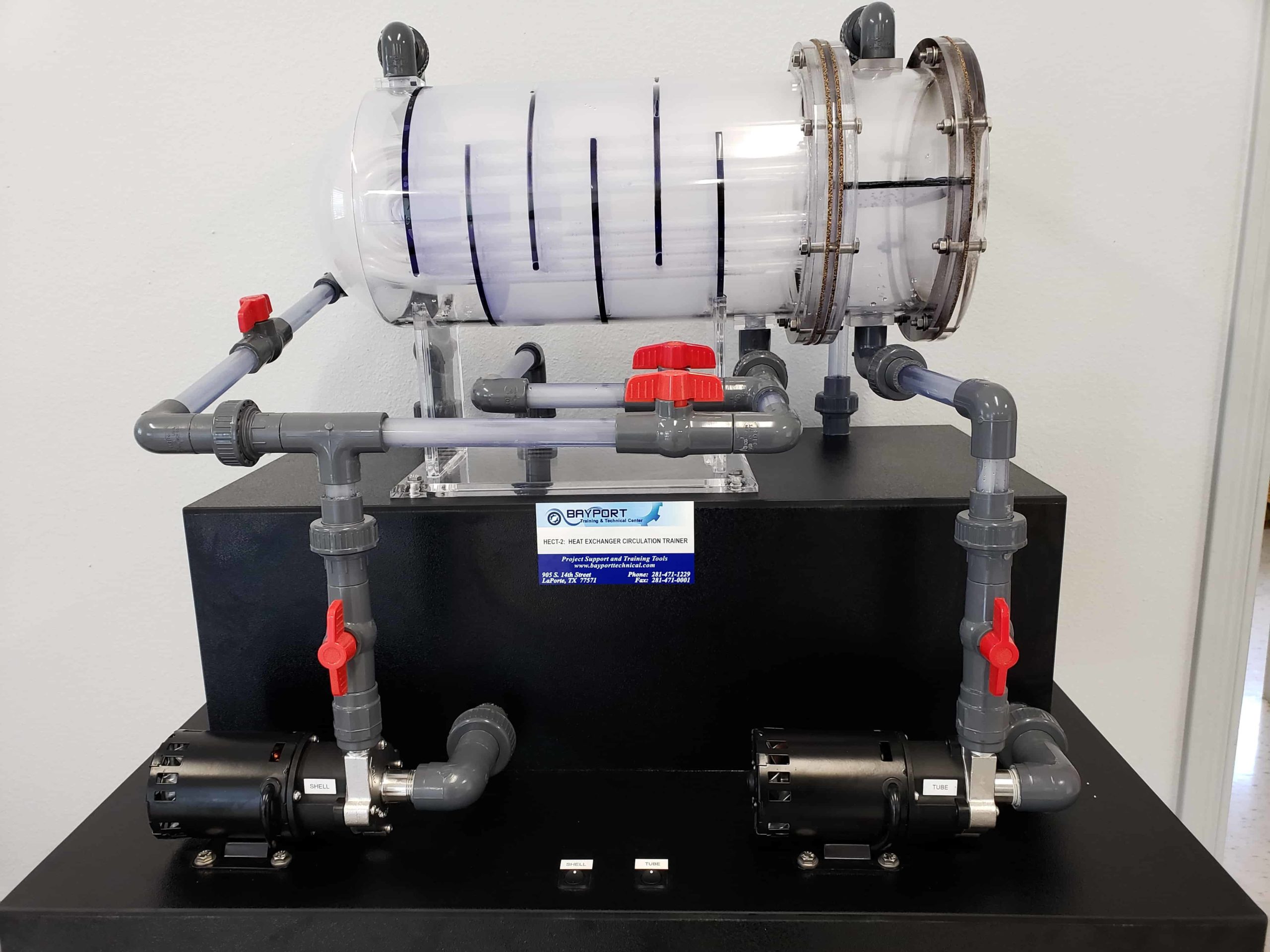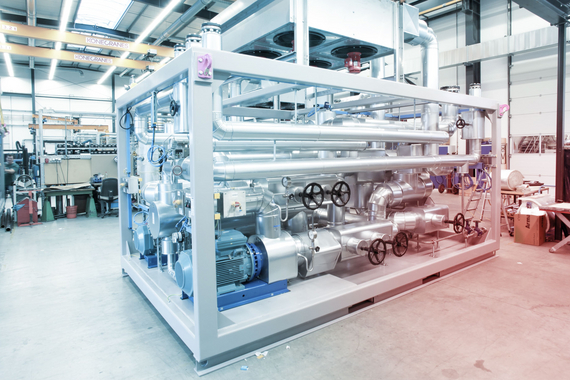A Practical Installation Guide for DVS Heat Transfer Systems in Smart Manufacturing
Developments in Heat Transfer Solutions: What You Need to Know for Optimum Efficiency
Innovations in Heat transfer systems are transforming efficiency throughout numerous markets. Advanced products like graphene and nanofluids assure substantial improvements in thermal conductivity. Meanwhile, the integration of IoT and artificial intelligence provides opportunities for real-time monitoring and improved power effectiveness. However, the landscape of thermal monitoring is swiftly developing (DVS Heat Transfer Systems). Recognizing these growths is crucial for accomplishing perfect system performance and sustainability in the future. What specific innovations are forming this change?
Arising Products for Enhanced Heat Transfer

Advanced Heat Exchanger Designs
While traditional Heat exchangers have actually offered their purpose in different applications, advanced designs are now emerging to fulfill the boosting needs for performance and performance. These ingenious designs, such as plate, shell-and-tube, and finned-tube Heat exchangers, include boosted surface areas and boosted flow patterns to increase thermal transfer prices. On top of that, compact layouts permit lowered room needs without endangering effectiveness. Advanced materials, such as composites and corrosion-resistant alloys, in addition improve sturdiness and performance under severe conditions. Furthermore, simulation innovations and computational fluid characteristics are progressively utilized to refine these layouts, making certain peak Heat transfer qualities. As markets seek to minimize power consumption and optimize outcome, the fostering of advanced Heat exchanger designs is crucial in accomplishing these objectives.
The Function of Nanotechnology in Heat Transfer
Nanotechnology plays a crucial duty in enhancing thermal conductivity within Heat transfer systems. By controling products at the nanoscale, scientists have achieved considerable improvements in power performance. These innovations not only enhance efficiency however additionally contribute to even more sustainable energy remedies.
Improved Thermal Conductivity
Considerable improvements in thermal conductivity have arised through the application of nanotechnology, changing Heat transfer systems throughout various sectors. By integrating nanoparticles right into Heat transfer liquids and materials, researchers have actually accomplished remarkable rises in thermal conductivity. These nanoparticles, such as carbon nanotubes, graphene, and metal oxides, boost the Heat transfer properties due to their high area and one-of-a-kind thermal features. The resulting compounds show boosted performance in applications varying from electronics cooling systems to renewable resource innovations. In addition, the capacity to customize the dimension, form, and structure of nanoparticles enables for optimized thermal management services. Therefore, nanotechnology remains to play a critical role in the development of much more reliable and reliable Heat transfer systems, leading the way for enhanced industrial applications.
Power Efficiency Improvements

Integration of IoT in Heat Transfer Solutions
The combination of IoT in Heat transfer systems presents the implementation of wise sensing units that boost functional effectiveness. These sensing units enable real-time information tracking, enabling immediate changes and optimizations. This technological advancement has the possible to substantially improve efficiency and energy monitoring in Heat transfer applications.
Smart Sensors Execution
As Heat transfer systems advance, the assimilation of wise sensors via the Web of Points (IoT) has become a transformative approach. These sensing units make it possible for real-time surveillance of stress, temperature level, and circulation rates, enhancing system effectiveness and reliability. By gathering and transferring data, they assist in proactive maintenance, reducing the threat of system failings. In addition, smart sensing units contribute to power financial savings by refining functional parameters based on environmental conditions. Their capacity to examine abnormalities and fads permits notified decision-making, ensuring peak efficiency of Heat transfer systems. As markets increasingly adopt this innovation, the implementation of clever sensors stands to reinvent how Heat transfer systems are handled, leading the way for higher sustainability and improved efficiency end results.
Real-Time Information Monitoring
How can real-time data keeping track of boost the efficiency of Heat transfer systems? By incorporating Web of Points (IoT) technology, Heat transfer systems can utilize constant data collection from smart sensors. This real-time monitoring permits instant evaluation of temperature, pressure, and circulation prices, allowing operators to identify inadequacies immediately. As a result, modifications can be made to maximize performance, lower power consumption, and extend tools lifespan. Additionally, anticipating upkeep can be executed, reducing unexpected downtime and costly fixings. The capability to picture efficiency metrics through dashboards enhances decision-making, cultivating a positive strategy to system monitoring. Eventually, real-time data checking not just enhances functional efficiency yet additionally adds to sustainability goals within industrial procedures.
Energy Performance and Sustainability Trends
Energy performance and sustainability patterns are reshaping the landscape of Heat transfer systems, driving development and compliance across various industries. Organizations are significantly prioritizing energy-efficient styles to decrease functional expenses and decrease ecological effects. The combination of sustainable energy resources is ending up being a lot more prevalent, allowing Heat transfer systems to operate sustainably while satisfying governing requirements. Additionally, innovations in modern technologies and materials promote reduced power intake and improve total performance. Lifecycle evaluations are likewise acquiring grip, permitting firms to assess the ecological effect of Heat transfer systems from manufacturing to disposal. This concentrate on sustainability not just sustains company responsibility yet likewise settings companies competitively in a market where consumers increasingly prefer green remedies. Energy effectiveness and sustainability remain vital considerations for future developments in Heat transfer innovation.
Developments in Thermal Administration Solutions
While the need for reliable Heat transfer continues to increase, advancements in thermal administration options are arising to attend to both performance and sustainability obstacles. Advanced products, such as phase modification materials and nanofluids, are being developed to boost Heat transfer effectiveness - DVS Heat Transfer Systems. These products boost thermal conductivity and allow for better temperature level policy in different applications. Additionally, modern technologies like active thermal control systems are gaining traction, making it possible for real-time changes to site link take care of Heat flow successfully. These systems add to power financial savings and lower the ecological effect of thermal processes. Furthermore, the combination of IoT in thermal management facilitates monitoring and anticipating maintenance, ensuring maximized performance and long life of Heat transfer systems. In general, these innovations stand for significant strides towards even more lasting thermal monitoring methods
Future Directions in Heat Transfer Innovation
Arising developments in thermal monitoring solutions signal an encouraging future for Heat transfer innovation. Researchers are significantly concentrating on developing products with premium thermal conductivity and boosted power efficiency. Technologies such as nanofluids, which consist of put on hold nanoparticles, supply significant enhancements in Heat transfer efficiency. In addition, the combination of wise products that adjust to differing temperature problems is obtaining grip, permitting more receptive and reliable systems. The surge of additive manufacturing techniques is likewise making it possible for the style of intricate Heat exchanger geometries that maximize liquid flow. The application of device knowing algorithms is prepared for to reinvent the optimization of Heat transfer systems, promoting anticipating upkeep and performance improvement. Collectively, these advancements are positioned to change the landscape of Heat transfer technologies in various industries.

Frequently Asked Questions

Just how Do I Select the Right Heat Transfer System for My Application?
Picking the best Heat transfer system entails evaluating Continued application needs, consisting of temperature level ranges, liquid properties, and efficiency needs. Examining system kinds, upkeep factors to consider, and cost-effectiveness likewise plays an important duty in making a notified decision.
What Are the Maintenance Demands for Advanced Heat Exchangers?
Maintenance requirements for advanced Heat exchangers normally consist of routine inspections, keeping an eye on for leaks, cleaning of surface areas, and assuring optimal circulation prices. Complying with supplier standards assurances effective operation and extends the devices's life-span.
Exactly How Do Ecological Aspects Influence Heat Transfer Effectiveness?
Environmental aspects substantially influence Heat transfer efficiency. Variants in humidity, air movement, and temperature impact thermal conductivity and convective Heat transfer, eventually influencing system efficiency and demanding factor to consider during the layout and procedure of Heat transfer systems.
What Security Standards Apply to Heat Transfer Equipments?
Safety criteria for Heat transfer systems usually consist of guidelines from organizations such as ASME and ASTM. DVS Heat Transfer Systems. These criteria address products, style, and functional methods to ensure integrity, efficiency, and defense against hazards in numerous applications
Just How Can I Troubleshoot Typical Heat Transfer System Issues?
Fixing common Heat transfer system problems entails looking for leakages, making sure appropriate fluid flow, inspecting insulation integrity, and verifying temperature level differentials. Determining these factors can assist keep system efficiency and prevent additional issues.
Nanotechnology plays a vital function in enhancing thermal conductivity within Heat transfer systems. Substantial developments in thermal conductivity have emerged via the application of nanotechnology, revolutionizing Heat transfer systems throughout different industries. Improvements in thermal click over here conductivity through nanotechnology have led the method for amazing improvements in energy efficiency within Heat transfer systems. Energy performance and sustainability trends are improving the landscape of Heat transfer systems, driving advancement and compliance across various industries. The combination of IoT in thermal administration helps with monitoring and anticipating upkeep, guaranteeing enhanced performance and longevity of Heat transfer systems.